The Suffolk sheep breed officially goes back to 1886 when the pedigree society was formed. However, the formation of the breed happened long before this, estimated sometime in the early 1800s.
The crossing of the Norfolk Horned ewes with Southdown rams were known at first as Southdown Norfolks, originating in the county of Suffolk in the southwest of England. It wasn’t until 1859 at the Suffolk Agricultural Association show when classes were introduced for these local sheep that the name ‘Suffolk’ was used to describe them.
Fast forward to January 1886 and a meeting of breeders took place which led to the formation of the Suffolk Sheep Society. Here it was also decided to study and record the points of the breed to help improve the type of sheep they wished to breed. In the original flock book of the same year, 32 of the original 46 flocks were in the county of Suffolk. It wasn’t until 1890 that the first flock outside the eastern counties of England was registered, FW Tazewell of Somerset.
Robin said: “There are older pedigree flocks, but it’s the oldest commercially viable flock book. There would be the likes of rare breed flock books.”

A pedigree Suffolk ram out with a commercial flock. \ Alfie Shaw
Irish flocks
Ireland was home to the first known registered flock outside England. Roscommon-based Henry Strevens established his flock in 1891, followed by RL Moore who formed his flock in 1893 in Co Derry. This was before there was any pedigree stock in Scotland or Wales. The first registered flock in Scotland was in Berwickshire in 1895, while Wales didn’t register a flock until 1901.
Branches
The society encourages the setting up of branch committees to be responsible for organising shows and sales in their respective areas. Each area also nominates representatives to serve on the society’s council. The current branches are Midlands and Eastern Counties, the North of England, Northern Ireland, Scottish Area, Southeast Branch, South of Ireland, and Western Area.
Robin said: “As the breed developed, the south of Ireland district, as it was called then, always had members on council. There seems to have been Irish on council as far back as 1918, so Ireland was represented on the governing body from a very early stage, which would imply it was a serious player always within the society.”
Exports
Just before and after World War II, Suffolks were exported to a number of countries. Reports suggest the need for mutton-producing sheep drew foreign breeders to Suffolks. Records show Suffolks were exported to North America very early in the 19th century. Following this, a number of ewes and rams were exported to Austria, France, Germany, Switzerland, Russia and South America.

Record priced Suffolk The overall top priced Suffolk sheep ever sold was the ram lamb Ardlea Arbennig which sold for 90,000gns (£94,500). Bred by Laois breeder Dan Tynan, Arbennig was sold at the Northern area sale in Stirling in 2011 and was purchased by Myfyr Evans. \ Alfie Shaw
The society of 2019
Now the society amounts to 1,500 members. Most of these are in England, which has nearly 400 flocks registered. Ireland remains a key player, with the second highest amount of 249 flocks. However, the breed can also be found in most parts of the world.
Robin says: “We have 31 registered flocks in Europe. There are more than that amount of pedigree Suffolk flocks but there are 31 affiliated to us. At a guess, there are about 20 to 25 other standalone societies. Mongolia is looking to set one up at the minute; they have identified the Suffolk as the most suitable breed because of their hardiness to weather. They can stand the heat and they can stand the cold.”
European flocks are in the Netherlands, Belgium, France, Germany, Portugal, Spain, Italy and Romania. There are Suffolks in Canada, and there is a big Suffolk community in Argentina and Brazil, all originated from the original society. Australia and New Zealand have big herd books.
Robin explains that export markets are still growing, with strong interest continuing from Spain and Portugal for pedigree stock. He also highlighted the massive demand from Turkey if numbers could be increased.
Of course, the breed needed to make changes to its phenotype along the way. Some of these worked out positively, but some needed to be reverted.
“It is now recognised that the Suffolk got too big in the head and too big in bone. The pedigree world was breeding big-boned sheep that the commercial man wasn’t wanting. There are characteristics that have been identified as a problem, but we are going back now.
“Other issues included dirty back ends; we’ve sort of addressed that too. We’re not hearing as much about it as breeders have started to breed it out. Vigour was always the other accusation that was made towards the Suffolk. That is one of the things we have looked at closely. We think it’s kind of a myth. There are flocks that have great vigour and others that don’t. It’s just about identifying the strains.
“What we are trying to do is try to address some of the excesses that maybe crept in over the last 10, 15, 20 years.”
Robin highlights that the breed is starting to see further growth now as these issues have started to be addressed.
“The number of Suffolk sires being used is increasing. In the terminal sire world, we are 24-26% of the terminal sire market across the UK and Ireland. The pedigree world is obviously big and important but we need the commercial side to sustain that so we must breed with them in mind.”
With this mind, much of the research and promotion the society has undertaken in recent years has been done with the commercial breeder in mind. A new publication set to be launched by the society in the coming weeks, Commercial Suffolks,
aims to promote some of the newest research trials with regard to finishing ability and taste.
Robin said: “Recent studies by AHDB/Signet’s Ramcompare project and the Ulster University’s Food and Consumer Testing Suite have highlighted the benefits of the Suffolk breed for both producers and the consumers. Suffolk-sired meat emerges first choice for 70% of consumers, with key attributes being taste and texture.”
To back up this information and to assure buyers of what they are getting, the society also introduced parentage testing for all males.
“At the moment it’s just DNA testing but we are also collecting genomics. We reckon in two years we should have sufficient data to select for certain traits, and to breed out any underlying faults.”
The future of the breed
One of the most positive aspects the society sees for the breed is the newly formed youth programme. Having had only 26 young breeders in 2016, the youth programme started in 2017 has seen numbers rise to 132.
“It’s great to see the youth is growing. We’ve done a lot of stuff in recent years for our youth, such as introducing registration incentives and starting workshops and finals. The workshops take place throughout the show year, but the national championships taking place in Carlisle in November is the main focus. This is open to all members and is really about building a community.”
Breed points
Head: Hornless; face black and long; muzzle moderately fine in ewes; ears a medium length, black and fine texture; eyes, bright and full.Neck – Moderate length and well set.Shoulder – Broad and oblique.Chest – Deep and wide.Back and loin – Long, level and well covered with meat and muscle; tail well set up, the ribs long and well sprung with a full flank.Legs and feet – Straight and black, with flat bones of good quality, woolled to the knees and hocks, clean below. Forelegs set well apart. Hind legs well filled with meat.Belly – Well covered with wood.Fleece – moderately short; close fine fibre without a tendency to mat or felt together and well defined.Skin - Fine, soft and pink colour.Records
Highest prices at auction
Stock ram - £18,900; Cairness Destiny, November 2004.Shearling ram - £4,935; J Bulmer and sons, society national sale 1986.Ram at society sale - £94,500; Ardlea Arbennig at Stirling 2011. Bred by Dan Tynan, Mountrath, Co Laois.Ram lamb at non-society sale - £23,000; Cairness Goldeneye at Kelso 1995. Bred by A Douglas and sons.Shearling ewe - £37,800; Cairness flock at Carlisle 2016.Ewe lamb - £24,150; W H Sinnot and son’s production sale 1997.
The Suffolk sheep breed officially goes back to 1886 when the pedigree society was formed. However, the formation of the breed happened long before this, estimated sometime in the early 1800s.
The crossing of the Norfolk Horned ewes with Southdown rams were known at first as Southdown Norfolks, originating in the county of Suffolk in the southwest of England. It wasn’t until 1859 at the Suffolk Agricultural Association show when classes were introduced for these local sheep that the name ‘Suffolk’ was used to describe them.
Fast forward to January 1886 and a meeting of breeders took place which led to the formation of the Suffolk Sheep Society. Here it was also decided to study and record the points of the breed to help improve the type of sheep they wished to breed. In the original flock book of the same year, 32 of the original 46 flocks were in the county of Suffolk. It wasn’t until 1890 that the first flock outside the eastern counties of England was registered, FW Tazewell of Somerset.
Robin said: “There are older pedigree flocks, but it’s the oldest commercially viable flock book. There would be the likes of rare breed flock books.”

A pedigree Suffolk ram out with a commercial flock. \ Alfie Shaw
Irish flocks
Ireland was home to the first known registered flock outside England. Roscommon-based Henry Strevens established his flock in 1891, followed by RL Moore who formed his flock in 1893 in Co Derry. This was before there was any pedigree stock in Scotland or Wales. The first registered flock in Scotland was in Berwickshire in 1895, while Wales didn’t register a flock until 1901.
Branches
The society encourages the setting up of branch committees to be responsible for organising shows and sales in their respective areas. Each area also nominates representatives to serve on the society’s council. The current branches are Midlands and Eastern Counties, the North of England, Northern Ireland, Scottish Area, Southeast Branch, South of Ireland, and Western Area.
Robin said: “As the breed developed, the south of Ireland district, as it was called then, always had members on council. There seems to have been Irish on council as far back as 1918, so Ireland was represented on the governing body from a very early stage, which would imply it was a serious player always within the society.”
Exports
Just before and after World War II, Suffolks were exported to a number of countries. Reports suggest the need for mutton-producing sheep drew foreign breeders to Suffolks. Records show Suffolks were exported to North America very early in the 19th century. Following this, a number of ewes and rams were exported to Austria, France, Germany, Switzerland, Russia and South America.

Record priced Suffolk The overall top priced Suffolk sheep ever sold was the ram lamb Ardlea Arbennig which sold for 90,000gns (£94,500). Bred by Laois breeder Dan Tynan, Arbennig was sold at the Northern area sale in Stirling in 2011 and was purchased by Myfyr Evans. \ Alfie Shaw
The society of 2019
Now the society amounts to 1,500 members. Most of these are in England, which has nearly 400 flocks registered. Ireland remains a key player, with the second highest amount of 249 flocks. However, the breed can also be found in most parts of the world.
Robin says: “We have 31 registered flocks in Europe. There are more than that amount of pedigree Suffolk flocks but there are 31 affiliated to us. At a guess, there are about 20 to 25 other standalone societies. Mongolia is looking to set one up at the minute; they have identified the Suffolk as the most suitable breed because of their hardiness to weather. They can stand the heat and they can stand the cold.”
European flocks are in the Netherlands, Belgium, France, Germany, Portugal, Spain, Italy and Romania. There are Suffolks in Canada, and there is a big Suffolk community in Argentina and Brazil, all originated from the original society. Australia and New Zealand have big herd books.
Robin explains that export markets are still growing, with strong interest continuing from Spain and Portugal for pedigree stock. He also highlighted the massive demand from Turkey if numbers could be increased.
Of course, the breed needed to make changes to its phenotype along the way. Some of these worked out positively, but some needed to be reverted.
“It is now recognised that the Suffolk got too big in the head and too big in bone. The pedigree world was breeding big-boned sheep that the commercial man wasn’t wanting. There are characteristics that have been identified as a problem, but we are going back now.
“Other issues included dirty back ends; we’ve sort of addressed that too. We’re not hearing as much about it as breeders have started to breed it out. Vigour was always the other accusation that was made towards the Suffolk. That is one of the things we have looked at closely. We think it’s kind of a myth. There are flocks that have great vigour and others that don’t. It’s just about identifying the strains.
“What we are trying to do is try to address some of the excesses that maybe crept in over the last 10, 15, 20 years.”
Robin highlights that the breed is starting to see further growth now as these issues have started to be addressed.
“The number of Suffolk sires being used is increasing. In the terminal sire world, we are 24-26% of the terminal sire market across the UK and Ireland. The pedigree world is obviously big and important but we need the commercial side to sustain that so we must breed with them in mind.”
With this mind, much of the research and promotion the society has undertaken in recent years has been done with the commercial breeder in mind. A new publication set to be launched by the society in the coming weeks, Commercial Suffolks,
aims to promote some of the newest research trials with regard to finishing ability and taste.
Robin said: “Recent studies by AHDB/Signet’s Ramcompare project and the Ulster University’s Food and Consumer Testing Suite have highlighted the benefits of the Suffolk breed for both producers and the consumers. Suffolk-sired meat emerges first choice for 70% of consumers, with key attributes being taste and texture.”
To back up this information and to assure buyers of what they are getting, the society also introduced parentage testing for all males.
“At the moment it’s just DNA testing but we are also collecting genomics. We reckon in two years we should have sufficient data to select for certain traits, and to breed out any underlying faults.”
The future of the breed
One of the most positive aspects the society sees for the breed is the newly formed youth programme. Having had only 26 young breeders in 2016, the youth programme started in 2017 has seen numbers rise to 132.
“It’s great to see the youth is growing. We’ve done a lot of stuff in recent years for our youth, such as introducing registration incentives and starting workshops and finals. The workshops take place throughout the show year, but the national championships taking place in Carlisle in November is the main focus. This is open to all members and is really about building a community.”
Breed points
Head: Hornless; face black and long; muzzle moderately fine in ewes; ears a medium length, black and fine texture; eyes, bright and full.Neck – Moderate length and well set.Shoulder – Broad and oblique.Chest – Deep and wide.Back and loin – Long, level and well covered with meat and muscle; tail well set up, the ribs long and well sprung with a full flank.Legs and feet – Straight and black, with flat bones of good quality, woolled to the knees and hocks, clean below. Forelegs set well apart. Hind legs well filled with meat.Belly – Well covered with wood.Fleece – moderately short; close fine fibre without a tendency to mat or felt together and well defined.Skin - Fine, soft and pink colour.Records
Highest prices at auction
Stock ram - £18,900; Cairness Destiny, November 2004.Shearling ram - £4,935; J Bulmer and sons, society national sale 1986.Ram at society sale - £94,500; Ardlea Arbennig at Stirling 2011. Bred by Dan Tynan, Mountrath, Co Laois.Ram lamb at non-society sale - £23,000; Cairness Goldeneye at Kelso 1995. Bred by A Douglas and sons.Shearling ewe - £37,800; Cairness flock at Carlisle 2016.Ewe lamb - £24,150; W H Sinnot and son’s production sale 1997. 





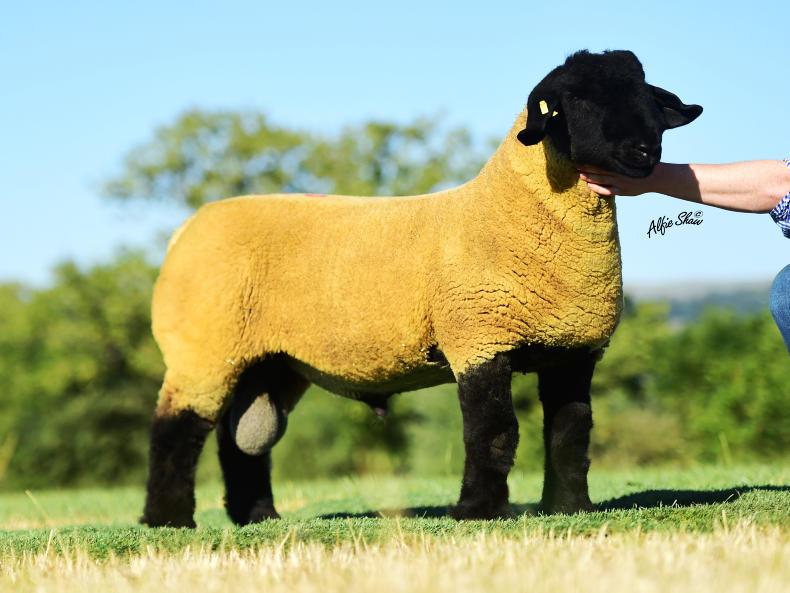
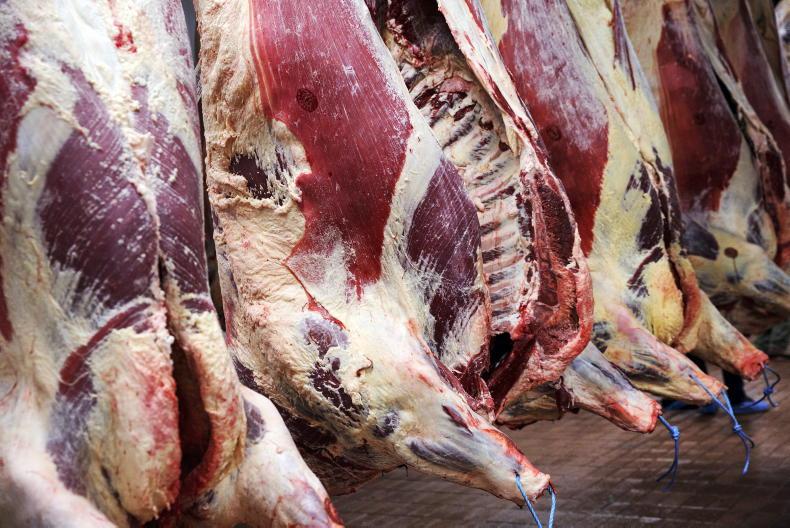

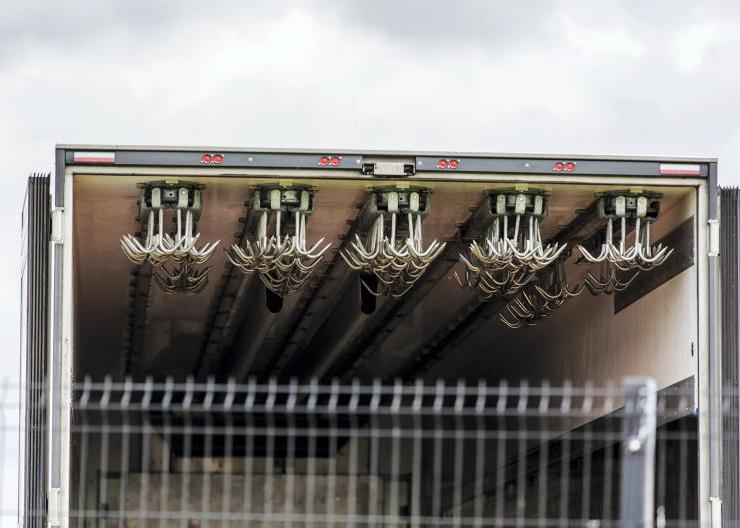
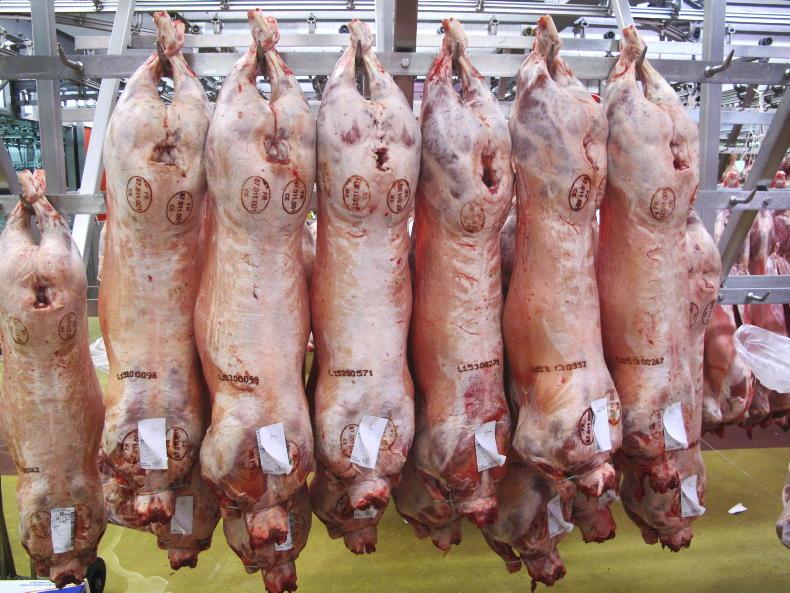
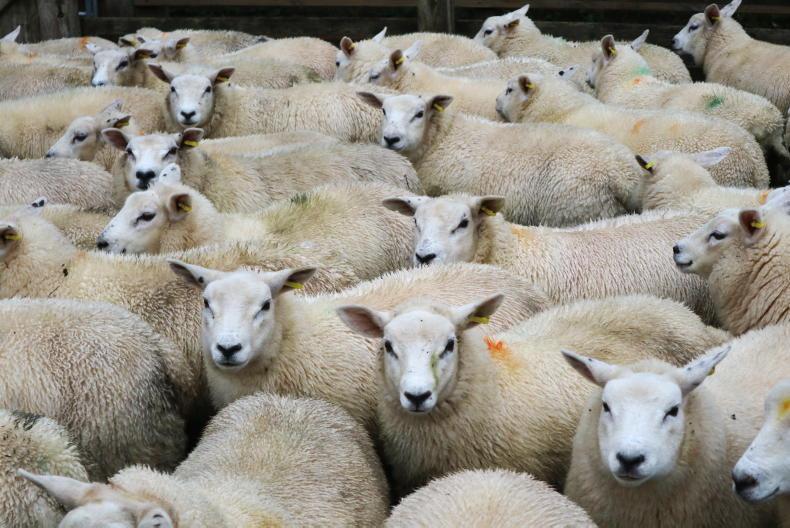
SHARING OPTIONS